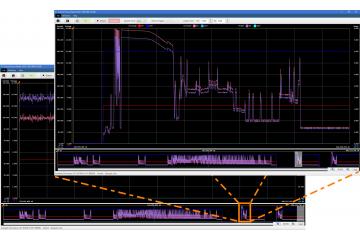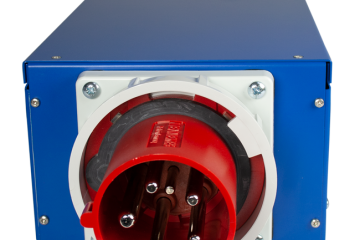
Andy Norrie
Anker 757 – Power analysis tests
The Anker 757 PowerHouse is a high-capacity battery with dual mains outputs and fast charging.
They are intended for camping trips and emergency backup and do look like one of the better options on the market. As we had one available to borrow, we decided to run it through a series of tests on our brand-new mains power analysis product.
A quick look through the product pages shows this basic spec:
-
-
- 2 x 1500W (Pure Sine Wave) outputs
- 2400W surge power
- 1000W AC input
- 1229Wh capacity
- 20mS UPS switchover time in case of mains failure
- 1 hour charge to 80% capacity
-
Test Equipment

We used our latest prototype, the IEC Power Analysis Module (or PAM). This uses standard IEC C13 connectors for fast setup, so we can quickly cable into either the output or input sockets of the Anker device. The PAM samples 8,000 times per second for accurate and detailed results. The data was recorded in Quarch Power Studio (also known as QPS) so we could view the entire trace and calculate statistics.
This is a prototype unit, and while it was calibrated and close to release, please consider the data here as indicative of what we can measure rather than guaranteed accurate results.
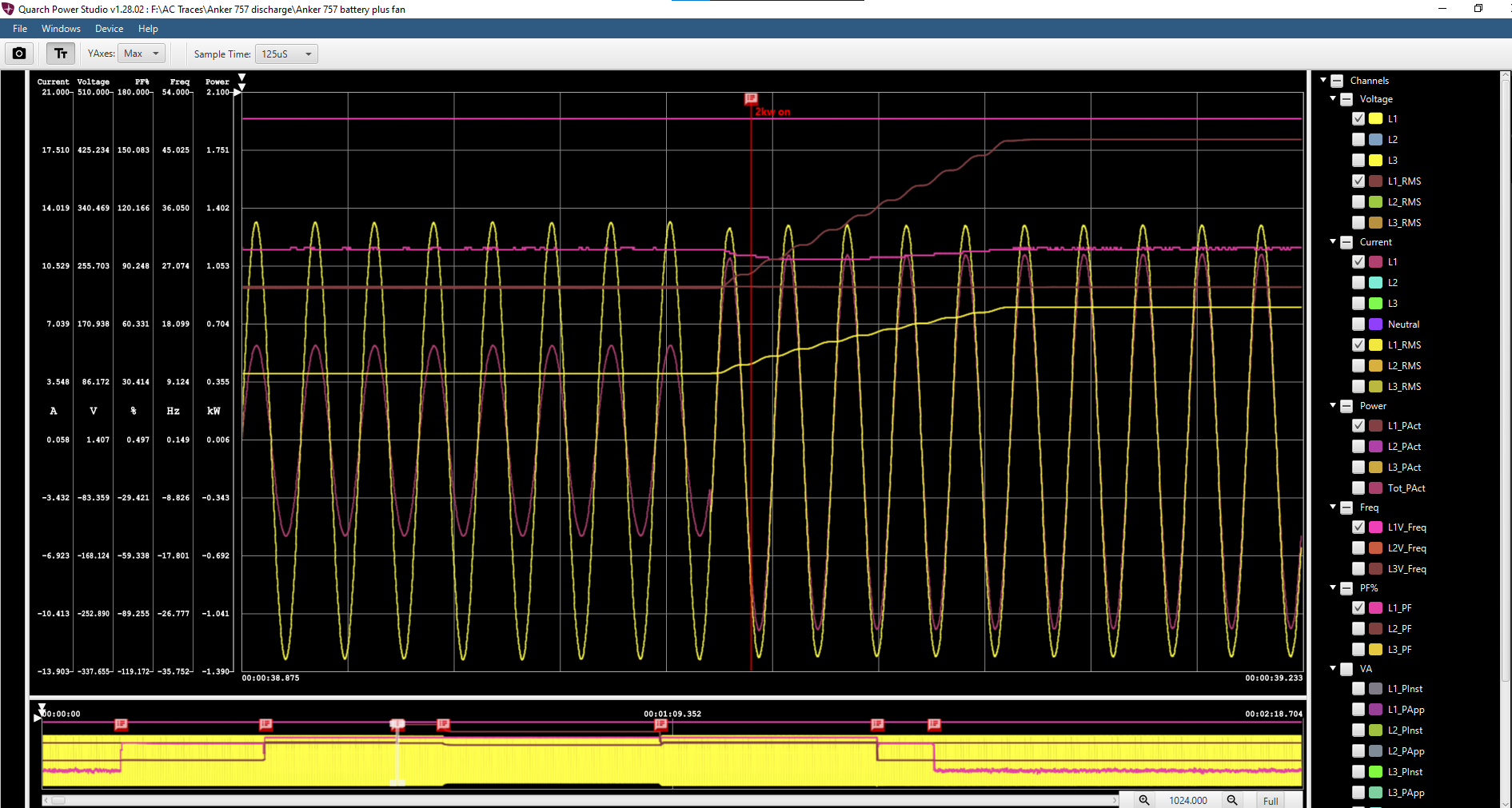
Fan heater discharge test
We started with a fully charged unit and a cheap 1 KW fan heater as a load, running the unit until it shut down and placing the PAM in series with the load so we could monitor the output.
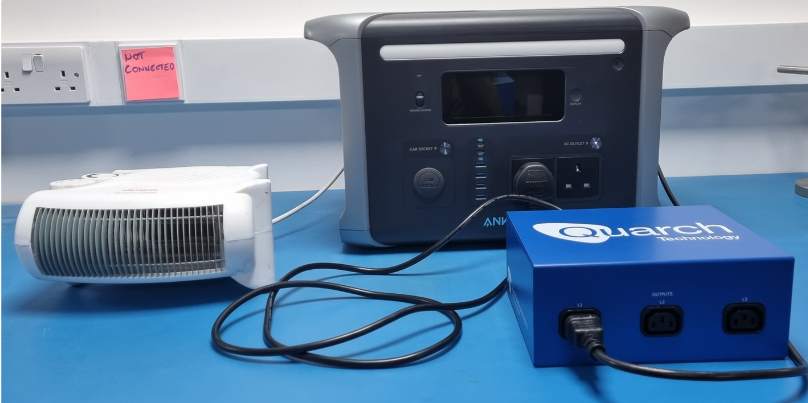
Initial results
The battery supplied the fan without issue, supplying a steady 227 volts most of the time. This did drop slightly over the last couple of minutes, prior to shutdown.
As UK mains is specified as 230V and seems to have an allowable range of 216.2 to 253 volts, this was in spec for the entire test.
The total power supplied to the fan was only 79% of the rated capacity of the unit, which suggests a lower efficiency than I would have guessed, given we are discharging at around a 1C rate
BU-402: What Is C-rate?
|
Total runtime |
1 hour, 3 minutes and 52 seconds |
|
Fan power draw |
917-946 Watts (921 Watts mean) |
|
Supply voltage (main region) |
226-228v |
|
Low battery region |
Around 1 minute and 40 seconds |
|
Supply voltage (low battery region) |
Dropped from 227 to 219 volts (linear drop) |
|
Fan power draw (low battery region) |
Dropped from 921 to 865 watts (linear drop) |
|
Total energy supplied |
0.975 KW (79% of rated battery capacity) |
|
Supply frequency |
50 Hz and very stable |
|
Fan power factor |
99.3% and very stable |
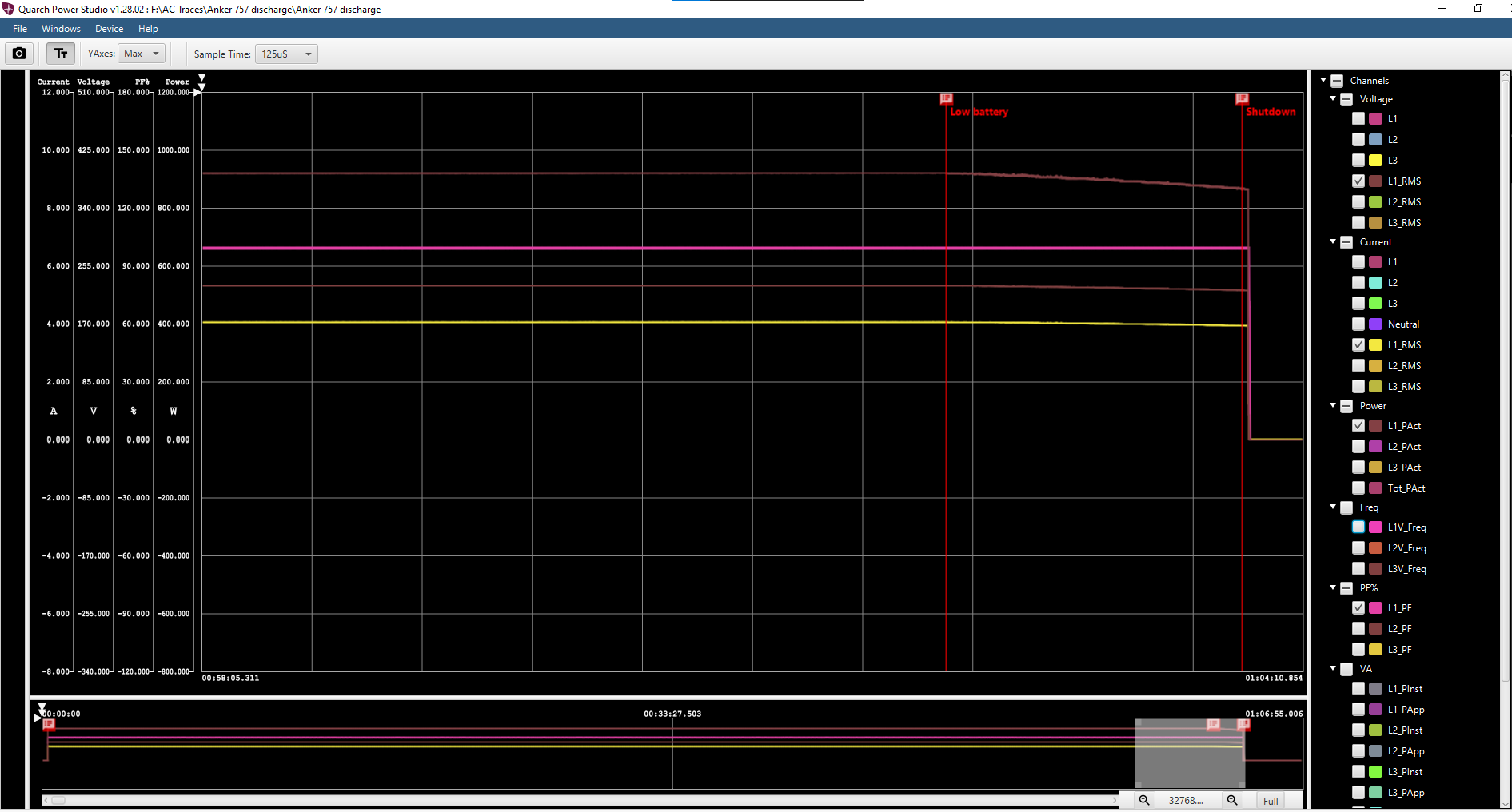
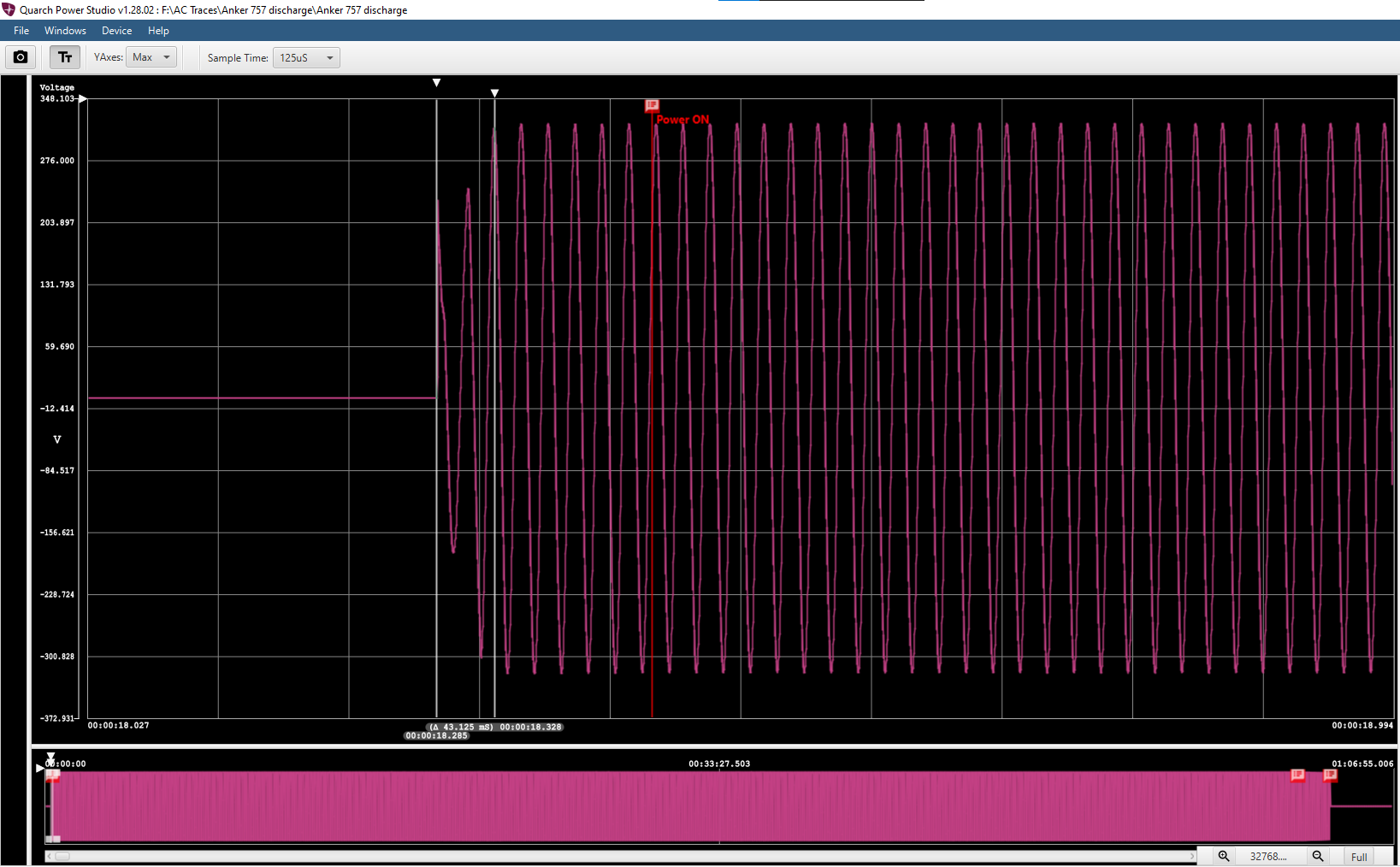
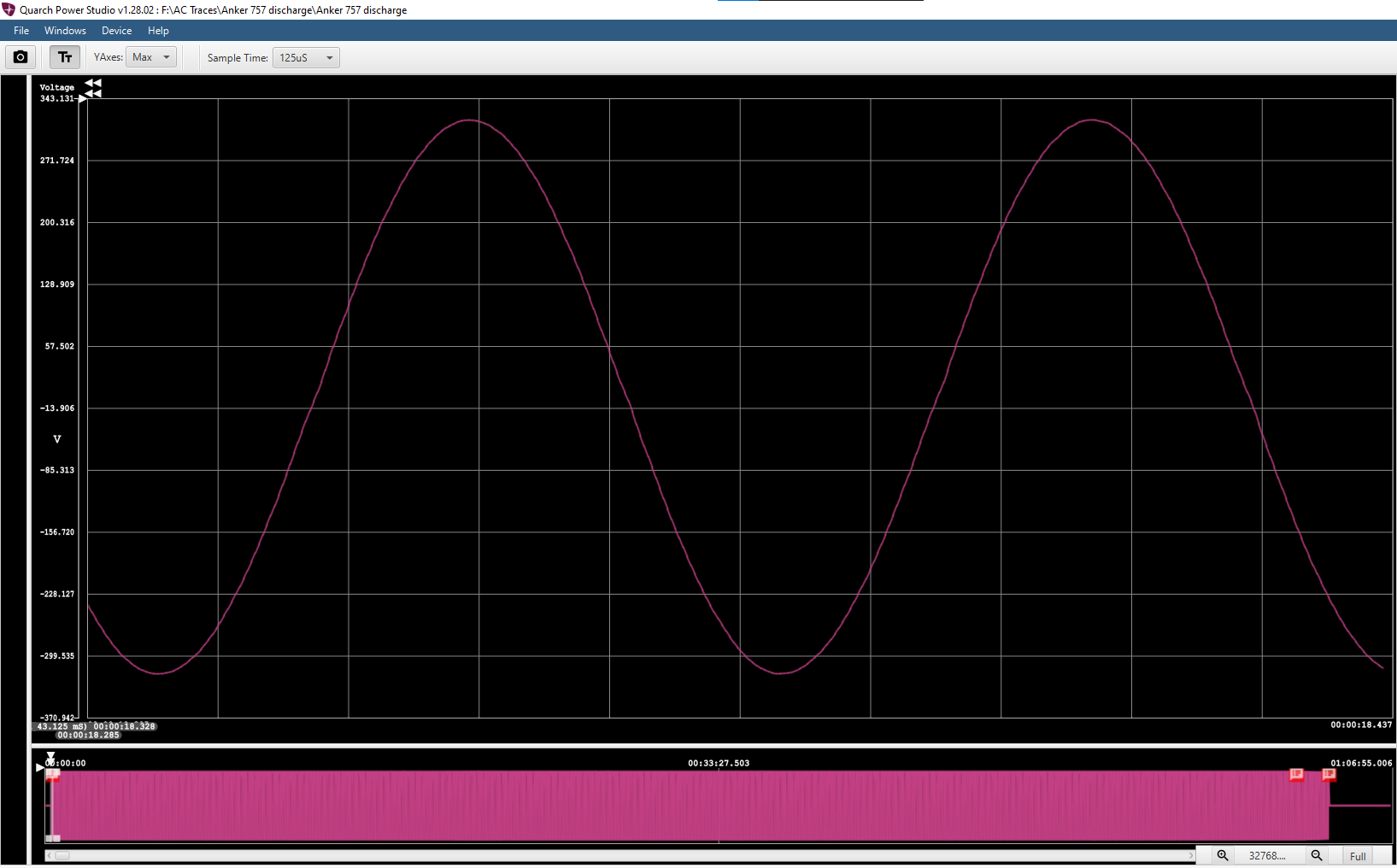

Charge test
From empty, we allowed the unit to rest for an hour, then switched the PAM to the input side, so we could monitor the charging performance.
Charging typically occurs in 3 stages:
-
-
-
Pre-charge
-
Constant current charge
-
Constant voltage charge
-
-
At power on, there are a few clicks and power spikes as the unit initialises over about 5 seconds
It then ran a precharge for about 5 minutes before switching into a 1 KW fast charge, which ran for about an hour. For the last 20 minutes, the charge rate dropped slowly as it reached capacity
In total, it took about 10% more energy to charge the battery than its rated capacity
|
Time to 100% charge |
1 hour, 25 minutes and 27 seconds |
|
Mains supply |
50Hz, 244 volts mean |
|
Initial slow charge |
5 minutes at 300 watts and 88% power factor |
|
Fast charge |
1 hour, 5 minutes and 46 seconds at 1095 watts and 98% power factor |
|
Final charge region |
Drops from 1044 to 227 watts over 19 minutes and 41 seconds (linear drop) |
|
1hr Charge percentage |
1.029 Kwh supplied, ‘suggesting’ around 75% charge in 1hr |
|
Total energy consumed |
1.36 Kw (110.66% of rated battery capacity) |

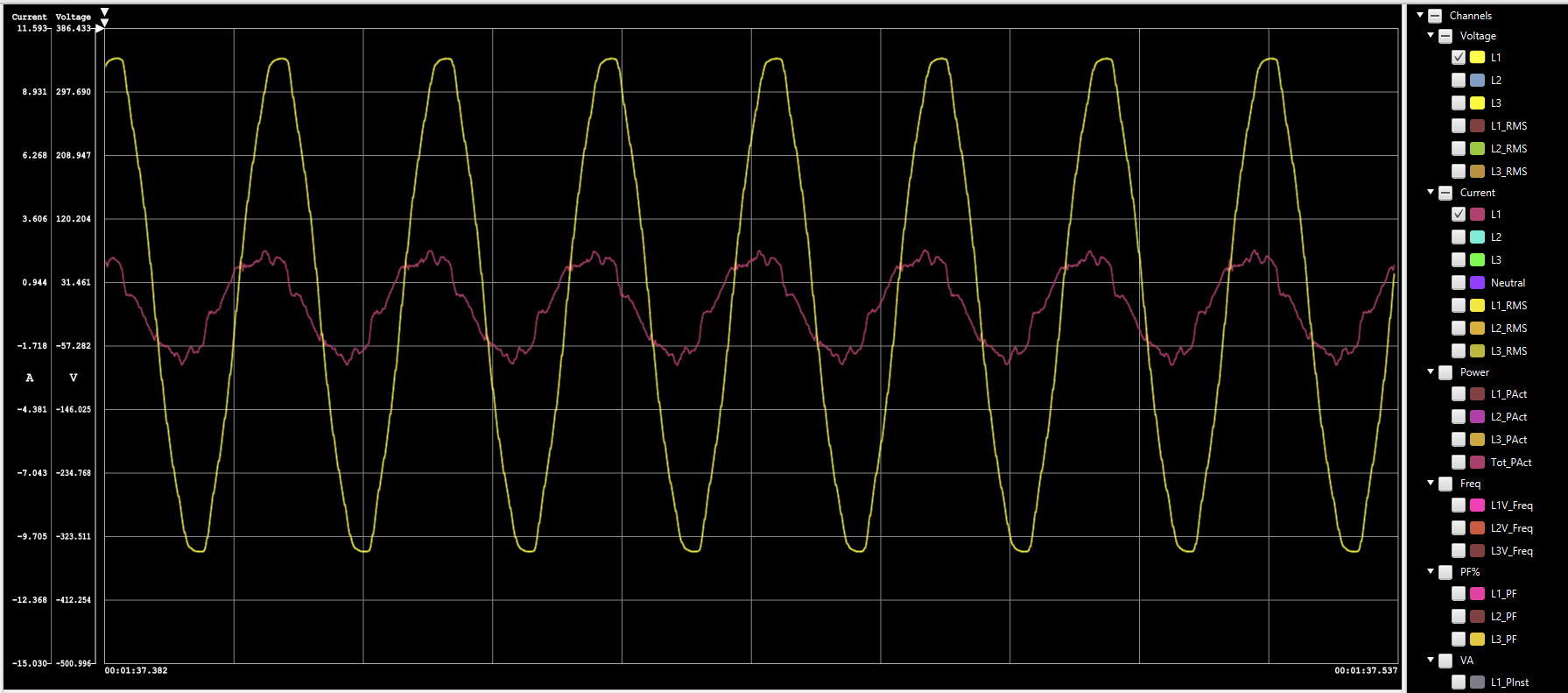
Over-power test
With a simple spec of 1500w output and 2400w ‘surge’, we were not sure exactly what to expect. Our fan had 1 and 2Kw modes, so this was a simple way to overload the outputs, and the results are pretty interesting
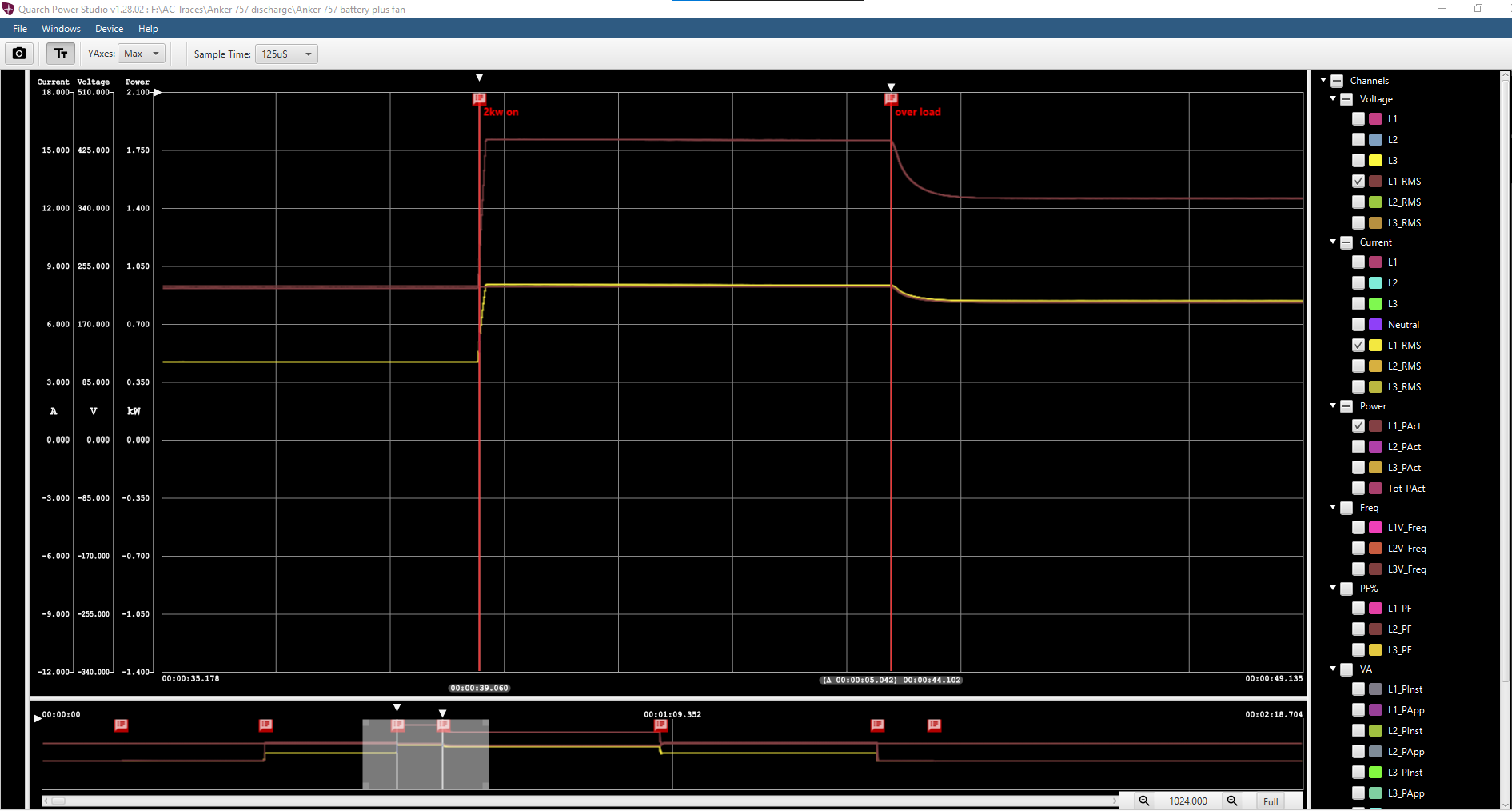
On enabling the higher load, the supply voltage jumped to around 1.8Kw and maintained this for around 5 seconds. After this, the Anker unit reduced its output voltage such that the supply was within its 1500w limit.
This is a pretty interesting choice, it did keep our heater running (instead of tripping) BUT at around 202 volts, the output is now well outside of the UK mains specification! This reaction to an over-power state may not be ‘bad’ but it is unusual, and we could not find it documented anywhere.

Direct Mains test
Next, we plugged in the charging lead at the same time. In this mode, the Anker unit supplies main power directly to the sockets. We see a higher output voltage (around 240v instead of 227v) and so the power drawn from the resistive load of the fan is higher.
In this mode, the unit does not hit the same over-power limit and supplies the full 2Kw to the fan constantly.
|
Supply voltage |
238 to 245 volts |
|
Supply power |
2.027 kW |
UPS Test
One Anker specification is that they can act as an UPS (uninterruptible Power Supply) and switch over from direct mains to battery supply in 20mS
This is an easy test for us, and we measured 18.8mS of disruption, although the next cycle does not quite reach the lowest voltage point. It’s clear that they have measured this themselves, though, and their stated figure seems pretty reasonable.
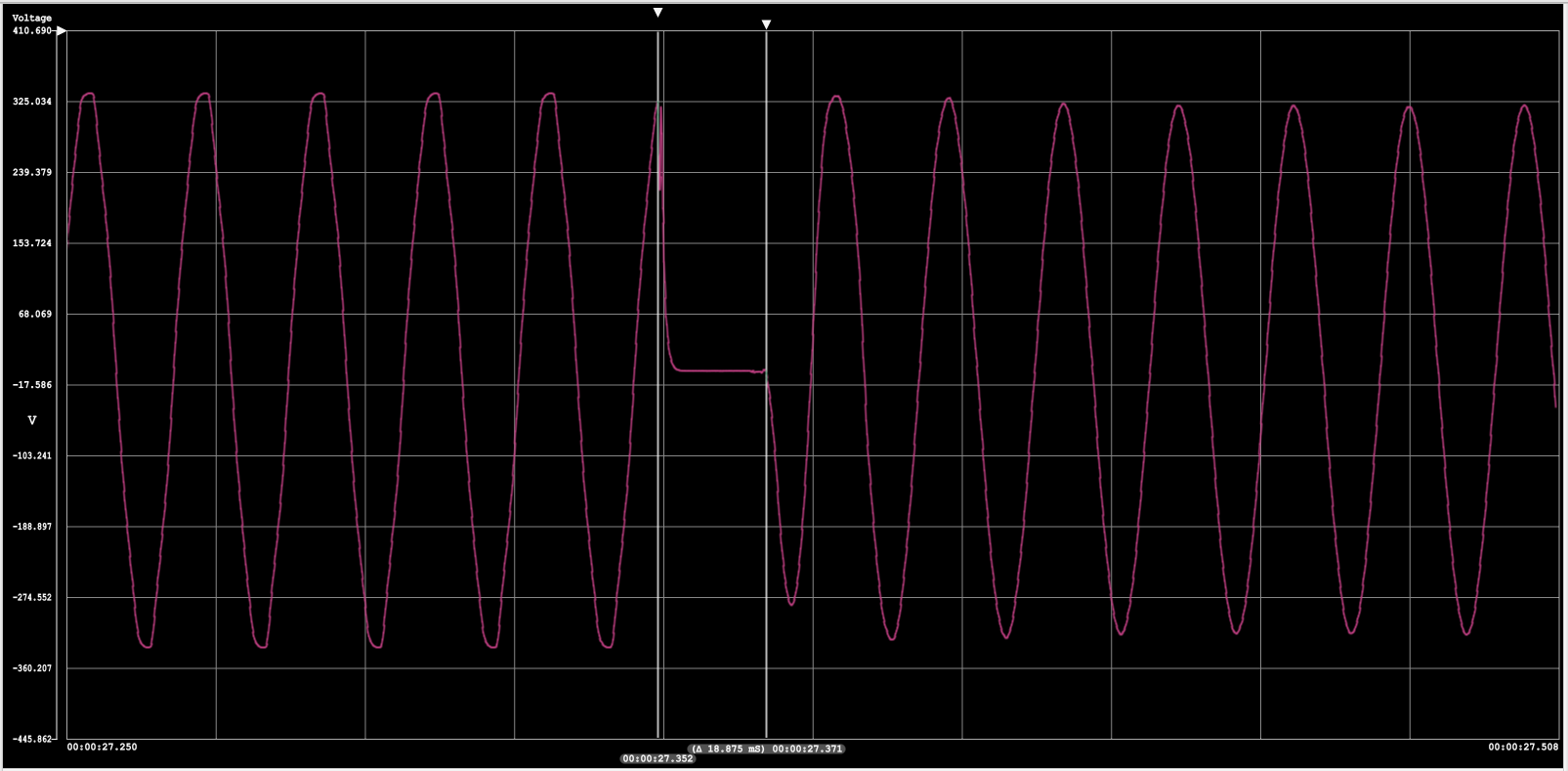
|
Disruption time (visually distorted region) |
18.8 mS |
|
‘Off’ time (flat region) |
17 mS |
|
Including the one poorer cycle |
~26 mS |
Conclusions
Anker 757 generally lives up to its claims. Our fan did not have great discharge efficiency, and dropping the voltage out of the mains specification may be problematic for some people.
Due to the lack of a socket in a convenient location, the battery is actually doing its job of powering the tree!


